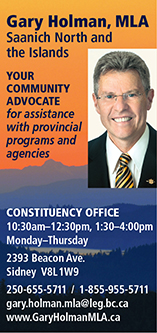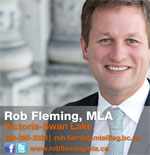Damning Site C
And Disturbing the Peace
article by Michele Murphy, based on video shot by Ed Johnson
BC Hydro named consortium Peace River Hydro Partners as its preferred partner in the 1.5 billion dollar Site C construction contract on Nov 25, 2015. The three-member partnership includes Korean based
Samsung, Acciona from Spain, and Calgary-based Petrowest Corp.
“a reasonable government would investigate the energy demand, analyze the cost and consider cleaner, more sustainable energy alternatives.”
As the BC Liberal government pushes ahead with the controversial mega project, Harold Steves, Richmond councillor, former Agricultural Land Commission (ALC) Chair, and ‘Father of the ALR’ Harold Steves continues to be very vocal with his opposition to the project saying that, “a reasonable government would investigate the energy demand, analyze the cost and consider cleaner, more sustainable energy alternatives.”
Saanich Voice Online and Saanich Report’s Ed Johnson recorded Steves’ presentation, “Future of Farmland and the ALR in BC,” made at a Farmland Protection Coalition gathering in Victoria in October. The one-hour presentation features Steves joined by former ALC Chair Richard Bollock, local farmer and land-use activist Natalie Chambers, and former
senior officer in the Ministry of Agriculture, Sig Peterson.
“The Peace’s farmland absorbs at least 50,000 tons of CO2 per year”
The well-attended talk laid out in no uncertain terms the immense impact to BC’s agricultural farmland stock that the flooding of 30,000 acres of prime farmland in the Peace River Valley would have. Steves talked about the state of food security in BC, noting the recent loss of over 500,000 of acres of active food production in California, at the same time as new crop opportunities open up in BC, attributing both to climate change.
Steves noted the value the Peace adds to BC’s carbon sequestration equation explaining that the Peace’s farmland absorbs at least 50,000 tons of CO2 per year. That won’t happen once the land is flooded.
He goes on to highlight many of the innovative green energy solutions that are currently in play in both Vancouver and Richmond as evidence of the lack of need for a mega-power project in this day and age.
Among the innovations Steves lists is an impressive solar network being looked at throughout the City of Vancouver that could see as many as 900,000 homes receiving their power from solar – twice Site C’s proposed output. Another such innovation is Richmond’s district-owned geothermal infrastructure. The project has already created enough energy to heat 12,000 homes, and Steves says, “We could do every home in Richmond over a period of time.”
You’ll find links for both an 8-minute Site C specific talk from Harold Steves HERE, and the larger one hour update on BC’s ALR HERE on Saanich Report’s Youtube channel











